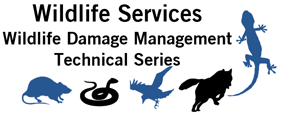United States Department of Agriculture: Animal and Plant Health Inspection Service

Wildlife Damage Management Technical Series
Date of this Version
10-2016
Document Type
Article
Citation
Avery, M.L. and M. Lowney. 2016. Vultures. Wildlife Damage Management Technical Series. USDA, APHIS, WS Na-tional Wildlife Research Center. Ft. Collins, Colorado. 17p.
Abstract
Black and turkey vultures cause problems in several ways. The most common problems associated with vultures are structural damage, loss of aesthetic value and property use related to offensive odors and appearance, depredation to livestock and pets, and air traffic safety. Management of these diverse problems often can be addressed by targeting the source of the birds causing the problem, namely the roost where the birds spend the night. Often the roost itself is the problem, such as when birds roost on a communication tower and foul the equipment with their feces or when they roost in a residential area. There, droppings and regurgitations create odors and their presence is perceived as a threat by the homeowners. Several methods are available for roost dispersal. As in many other situations, roost dispersal might best be accomplished through the integrated use of more than one damage management method. The details of the situation will dictate which management approach is the most appropriate, and experience has shown that best results are obtained if the source roost can be dispersed.
Included in
Behavior and Ethology Commons, Biodiversity Commons, Other Animal Sciences Commons, Other Ecology and Evolutionary Biology Commons, Population Biology Commons, Terrestrial and Aquatic Ecology Commons


Comments
US government work